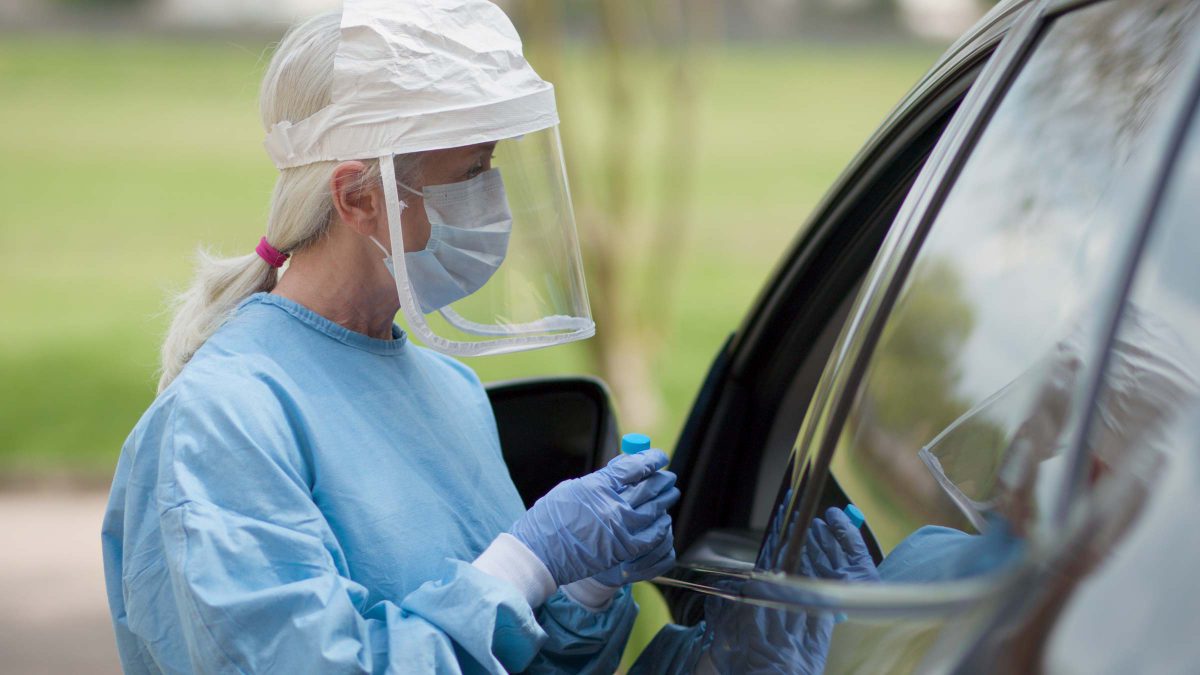The United States has made significant strides in Covid-19 testing capacity in recent months. As recently as late February, the CDC had approved only one type of Covid-19 test, but in response to overwhelming need, the FDA changed the criteria for the manufacture and use of test kits by making it easier for manufacturers to apply for an Emergency Use Authorization (EUA) 1 2 3. At the same time, we have shifted from a need for mostly direct tests, those which look specifically for the virus to determine if an individual is actively infected, to include indirect tests, those which screen for antibodies to determine if an individual has previously been infected and may now harbor some level of immunity to Covid-19 1 4. Many experts feel it is especially important to track the spread of the disease through these antibody tests 14 16 18. This type of testing allows researchers to track where the virus has already spread and where and for whom certain restrictions may be relaxed – a key indicator for getting the economy back on track, especially if a second wave of Covid-19 sweeps the country in the coming months 1 5 6 7. These tests also provide important data researchers will use to identify individuals who are able to donate plasma for Covid-19 patient treatment, and to eventually determine the long-term immunological benefit of these antibodies 12 14 16 17 18.
In an effort to work through the nearly 200 different antibody tests in circulation, most of which have not received FDA clearance via an Emergency Use Authorization (EUA), the FDA, NIH, and CDC are now working together to validate the efficacy of the all test kits marketed in the United States and establish accepted criteria for accuracy 17 18. The FDA now mandates all tests meet specific testing criteria as verified by the National Cancer Institute or other government-authorized laboratory 17 18. Until all of these tests can be investigated and the results published, hospital administrators and government agencies should take care to investigate the manufacturer and predicted accuracy of any given test prior to investing money in kits that may prove to be inaccurate or defective 8 9.
The new FDA criteria for accuracy establishes IgG and IgM antibody benchmarks for sensitivity at 90% and specificity at 95% 18. Although these figures represent a high bar for accuracy, it is important to understand exactly what they mean in terms of real numbers when looking at a given test. In medical research, the sensitivity of a test refers to its ability to correctly identify a positive finding, indicating a low incidence of false-negative results, while a test’s specificity refers to its ability to correctly identify a negative finding, indicating a low incidence of false-positive results 11 13 15 16. If one assumes the stated sensitivity and specificity rates for a given test are correct, and the estimated prevalence of Covid-19 in the U.S. population is accurate at 5%, a test with 90% specificity would result in a positive predictive value of just 32.1% – meaning a nearly 68% incidence of incorrect results, a test with 95% specificity would deliver a 50% incidence of false-positive results; even a test with a specificity of 99% would still be incorrect in 16% of cases 11 13 15. Moreover, as it takes the body time to produce sufficient antibodies for them to be detectable, the timing of the test can significantly impact results 10 11 15. A continually updated list of tests available with and without U. S., European, and Asian market approvals can be found here: https://www.360dx.com/coronavirus-test-tracker-launched-covid-19-tests
Until the FDA publishes information regarding the accuracy of the tests, information regarding how Covid-19 antibody tests rank in head-to-head comparisons can be found in two recent studies by Evaluate Vantage and The Covid-19 Project. Those results can be found via the following links:
- https://www.evaluate.com/vantage/articles/analysis/spotlight/covid-19-antibody-tests-face-very-specific-problem
- https://covidtestingproject.org
Sources
- (1) https://fivethirtyeight.com/features/there-are-not-enough-covid-19-tests-there-are-also-too-many-covid-19-tests/
- (2) https://www.nytimes.com/interactive/2020/04/17/us/coronavirus-testing-states.html
- (3) https://www.fda.gov/medical-devices/emergency-situations-medical-devices/emergency-use-authorizations#coronavirus2019
- (4) https://www.cdc.gov/coronavirus/2019-ncov/symptoms-testing/testing.html
- (5) https://covidtracking.com/data
- (6) https://fivethirtyeight.com/videos/why-the-u-s-cant-process-coronavirus-tests-as-fast-as-south-korea/
- (7) https://www.fda.gov/medical-devices/emergency-situations-medical-devices/faqs-diagnostic-testing-sars-cov-2
- (8) https://www.texastribune.org/2020/04/10/laredo-texas-coronavirus-tests-did-not-work/
- (9) https://www.nytimes.com/2020/04/16/world/europe/coronavirus-antibody-test-uk.html
- (10) https://www.aruplab.com/news/4-21-2020/How-Accurate-Are-COVID-19-Tests
- (11) https://www.evaluate.com/vantage/articles/analysis/spotlight/covid-19-antibody-tests-face-very-specific-problem
- (12) https://www.fiercebiotech.com/medtech/fda-cdc-nih-to-begin-validating-covid-19-antibody-tests-as-more-enter-market
- (13) https://covidtestingproject.org
- (14) https://covidtracking.com/why-it-matters
- (15) https://www.ncbi.nlm.nih.gov/pmc/articles/PMC2636062/
- (16) https://www.ucsf.edu/news/2020/04/417276/testing-tests-covid-19-antibody-assays-scrutinized-accuracy-ucsf-uc-berkeley
- (17) https://www.fda.gov/news-events/fda-voices/insight-fdas-revised-policy-antibody-tests-prioritizing-access-and-accuracy
- (18) https://www.raps.org/news-and-articles/news-articles/2020/5/fda-creates-umbrella-emergency-pathway-for-covid-1

